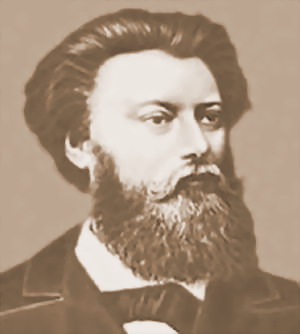- Pavel Yablochkov
Infobox Engineer

image_size = 150px
caption = PAGENAME
name = PAGENAME
nationality =Russia
birth_date = OldStyleDate|September 14|1847|September 2
birth_place =
death_date = OldStyleDate|March 31|1894|March 19
death_place =
education =
spouse =
parents =
children =
discipline =
institutions =
practice_name =
significant_projects =Yablochkov candle
significant_design =
significant_advance =
significant_awards =Pavel Nikolayevich Yablochkov ("Павел Николаевич Яблочков" in Russian) ((OldStyleDate|September 14|1847|September 2 – OldStyleDate|March 31|1894|March 19) was a Russian
electrical engineer , theinventor of theYablochkov candle (a type of electric carbonarc lamp ) and businessman.In 1866, he graduated from Nikolayevsky Engineering Institute as a
military engineer , and then in 1869, from Technical Galvanic School inSaint Petersburg . After serving in the army, Yablochkov retired toMoscow in 1873, where he was appointed Head ofTelegraph Office at the Moscow-Kursk railroad. He opened up a workshop for his experiments in electrical engineering, which laid down the foundations for his future inventions in the field of electriclighting , electric machines,galvanic cell s and accumulators. 1875 saw one of Yablochkov’s major inventions called "electric candle" — the first model of an arc lamp without a regulator. He went toParis the same year where he built an industrial sample of an electric bulb (Frenchpatent № 112024, 1876). He also developed and introduced the system of electric lighting on a single-phasealternating current (“Russian light”), which was demonstrated at the World exhibition in Paris in 1878 and was extremely successful. Some French, English, and American businessmen even set up companies at home for its commercial exploitation. He offered the idea of a lighting system based on a set of induction coils, where primary windings were connected to a source of alternating current and secondary windings could be connected to several electric "candles". As the patent said such a system "allowed to provide separate supply to several lighting fixtures with different luminous intensities from a single source of electric power". In 1879, Yablochkov established “Electric Lighting Company, P.N. Yablochkov the Inventor and Co” and an electrical plant in Petersburg that would later produceilluminators for military vessels and factories.From the mid-1880s, Yablochkov mostly occupied himself with problems of generating electric
energy . He constructed the so called “magnet dynamo electric machine”, which had most of the features of the moderninductor . Yablochkov did extensive research on transformation of fuel energy into electric energy, suggested a galvanic cell withalkaline electrolyte , and created aregenerative cell (the so called autoaccumulator).Yablochkov participated in Electrical engineering exhibitions in
Russia (1880 and 1882), Paris (1881 and 1889), and First International Congress ofElectrician s (1881). In 1947, the USSR introduced the Yablochkov Award for the best work in the field of electrical engineering.
Yablochkov crater on theMoon is named after him.ee also
*
Yablochkov candle
*A biographical research of the life of Pavel Nikolayevich Yablockkov by Prof.Lev Davidovich Belkind
Wikimedia Foundation. 2010.
